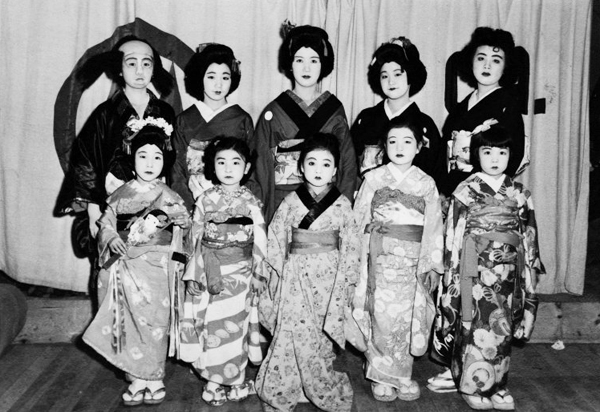2014 / Documentary on Japanese culture at war time internment to be screened, April 5

Hidden Legacy: Japanese Buyo dance at the war time internment. Bando Miharu (top, center) Reiko Akahoshi Iwanaga (1st row, far left)
From Shirley Muramoto info@jcalegacy.com
Next Saturday, April 5, will be the first work-in-progress screening of “Hidden Legacy” at 4 pm at the Japanese American National Museum in Los Angeles.
It is free with admission, so please come and join us.
About 12 of the people we interviewed in the film will also be there, and they cover the Japanese traditional performing arts of Buyo classical dance, Obon Odori, Koto and Shigin.
We will have a Q&A and short reception following the film.
My son, Brian, and I will play koto music prior to the screening.
+
“Hidden Legacy: Japanese Traditional Performing Arts in the World War II Internment Camps” is the full title of this documentary, using historical footage and interviews from artists who were interned to tell the story of how traditional Japanese cultural arts were maintained at a time when the War Relocation Authority (WRA) emphasized the importance of assimilation and Americanization.
Various essays and studies concerning the camps have been published, but have focused on the political and legal aspects of the internment, while hardly mentioning cultural and recreational activities in the camps.
When cultural and recreational activities have been documented, they have focused on American culture, such as baseball and swing music. This film will be the first major presentation of the existence of traditional music, dance and drama in the camps.
It is possible only because Shirley Kazuyo Muramoto-Wong has been searching, researching and collecting for over 20 years information on who these artists were. She has collected interviews, oral and visual histories, as well as artifacts from the internees and relatives of internees, including teachers, students, the performers, and the incredible artists who made instruments, costumes, and the props needed for a full performance from scraps of wood, toothbrush handles, gunny sacks, paint, and whatever they could scrape up.
Her own family’s history with the camps led her to become a kotoist and teacher of the Japanese koto (13-stringed zither).